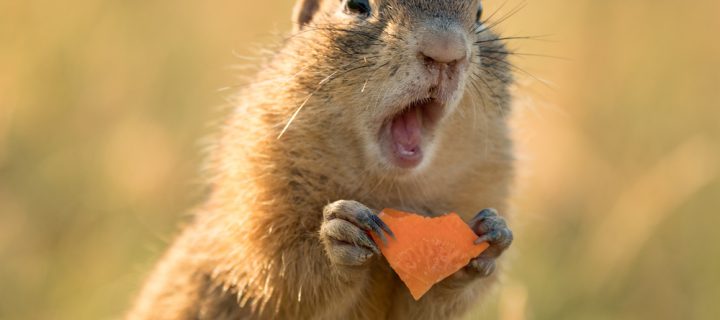They’re common critters in parks… and they may hold the key to a significant breakthrough in modern medicine.
No, it’s not the kindergarten students that’ve been set loose after school. It’s your friendly, neighbourhood squirrels.
Amazingly, the little woodland creatures could offer priceless insights into treatments for stroke patients, reducing the risk of brain damage, paralysis and speech problems. Researchers are hopeful they can even lead to a cure.
A recent study in the U.S. examined the ‘protective process’ that happens in squirrels’ brains when they hibernate – we know they emerge from their slumber none worse for wear, even with the lack of blood flow, oxygen, and nutrients during hibernation.
The scientists learned the cellular process called SUMOylation ramps up during squirrel hibernation, as a natural mechanism to protect and keep the rodent’s brain healthy. The process can actually be boosted further with injections of the enzyme ebselen.

Researchers are now determining if these injections can re-create the hibernation process in humans, buying doctors more time to work on stroke victims. The victim’s health wouldn’t deteriorate, preserving their brain and body functions until a suitable treatment is found.
Joshua Bernstock, the study’s author, hopes to get there.
“If we could only turn on the process hibernators appear to use to protect their brains, we could help protect the brain during a stroke and ultimately help people recover.”
The research caught the attention of other doctors, including Dr Francesca Bosetti, program director at the National Institute of Neurological Disorders and Stroke (NINDS):
“For decades scientists have been searching for an effective brain-protecting stroke therapy to no avail… If the compound identified in this study successfully reduces tissue death and improves recovery in further experiments, it could lead to new approaches for preserving brain cells after an ischemic stroke.
“As a physician-scientist, I really like to work on projects that have clear relevance for patients… I always want outcomes that can lend themselves to new therapeutics for people who are in need.”
Related: Half of Heart Attacks are Symptomless, Study Says
When an ischaemic stroke occurs, the blood supply, filled with sugar and oxygen, is impeded to the brain, leading to the cells dying. As of now, the only way to reduce the risks of stroke-related brain damage is by removing the clot as fast as possible.
Stroke is the leading cause of long-term disability in the U.S. Every year, nearly 800,000 people suffer from a stroke; 600,000 are first attacks, while the rest are recurrent episodes. Nearly three-quarters of all strokes occur in people over the age of 65. In Canada, there are over 50,000 new strokes – relative to the population of the country, that’s about one stroke every 10 minutes.
Experts have already expressed optimism that these findings will encourage other researchers to explore nature for solutions to medical problems.
The research was published in the journal of the Federation of American Societies for Experimental Biology.
Photo Credit: Jan Stria/Shutterstock; VOJTa Herout/Shutterstock












